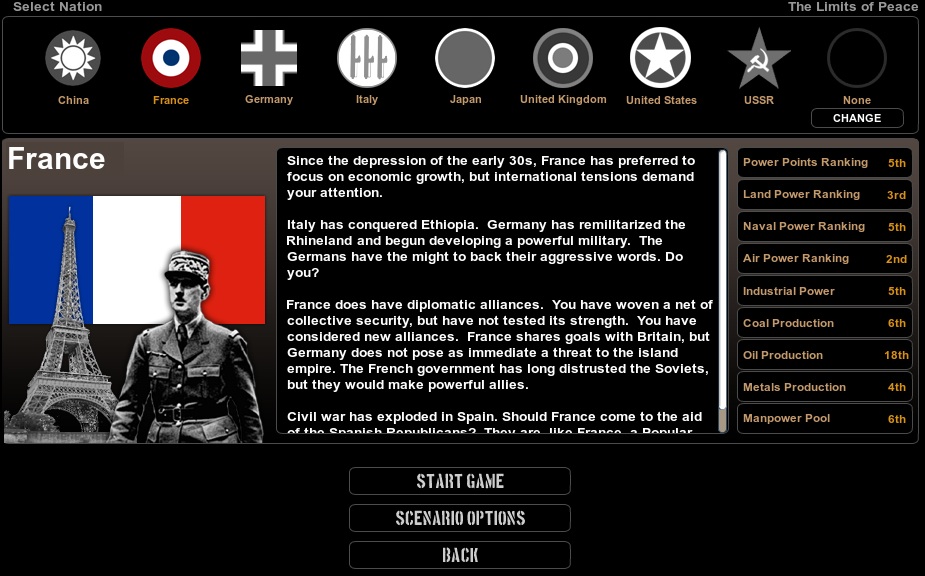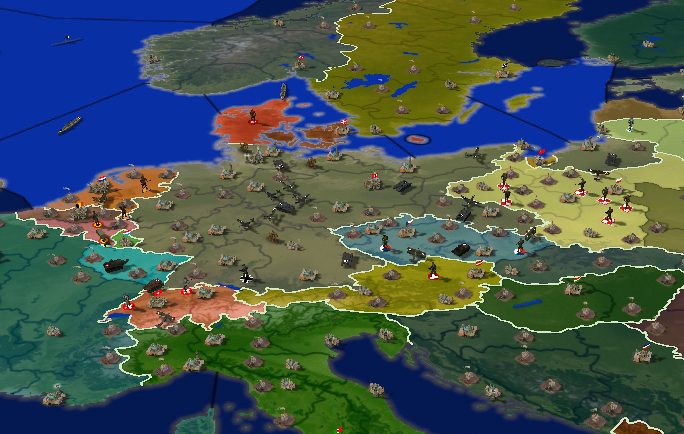 Making History: The Calm and the Storm
Making History: The Calm and the Storm Making History: The Calm and the Storm
Making History: The Calm and the Storm
Navigation: |
Making History: The Calm and the Storm was released in 2007 by Muzzy Lane Software and Strategy First Inc. The game is a turn based strategy game based in World War II. As of patch 2.03 you can play as any of the world's nations in a number of scenarios ranging from 1936 to the end of the war. Below is an image of the country selection screen for the 1936 scenario entitled "The Limits of Peace."
The World map is divided up into regions. There are two different types of regions: land regions and sea regions. Land regions may contain cities, military units and/or ressource producers. Sea regions may contain military units. Land regions also have particular attributes such as owner nation, controller nation, agricultural infrastructure, fortifications and transportation infrastructure. 
Diplomacy |